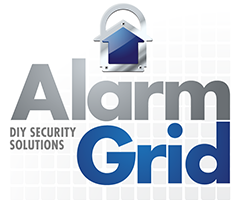DIY Wireless Security Systems






A wireless security system refers to a self-contained, all-in-one panel that has a controller integrated with the system itself. Inside a wireless security system is a wireless receiver used for communicating with wireless sensors. The wireless sensors send signals at a specific frequency so that they can communicate with the alarm system. The system will accept these incoming signals via its wireless receiver. These signals will instruct the system to perform specific actions, such as triggering an alarm or producing a chime. Some users also program wireless sensors to trigger Z-Wave scenes.
One great thing about wireless alarm systems is that they are very easy to install. This is because there is usually no need to run or fish wires throughout the building. Instead, wireless sensors can be used throughout. To make matters easier, most wireless sensors can be mounted using double-sided foam tape. This prevents the need for using screws and drilling holes into the wall. Of course, screws can still be used for mounting if desired, but the foam tape route is sometimes preferred by DIY installers. Either way, the entire installation and setup process is kept extremely simple.
Wireless security systems are usually ideal for homes and small businesses that need complete protection. The core of the setup is the security panel. This device is essentially the "brains" of the operation. As mentioned earlier, any wireless signal from a sensor will be sent to this piece of equipment. The panel will then perform a response based on the programming settings for that sensor when it is activated. If an alarm is triggered, the panel will be responsible for sending out a distress signal to the user or to a central monitoring station. It is very important to always make sure that the panel is communicating properly.
Any sensor that is used with a security system will need to be programmed with the panel. For wireless sensors, this is usually a very easy process. Most wireless systems have a learn mode for enrolling new wireless sensors. To learn in a new sensor, put the panel in this mode. Then fault the sensor. The system should recognize the sensor and learn it in. Some systems will require you to fault the sensor multiple times or activate its tamper switch to learn it in. The programming settings for the sensor can then be adjusted as needed. This includes setting a Response Type and providing a Sensor Name.
To achieve a complete security setup, multiple sensor types will be needed. Some of the most common and useful security sensors include door and window contacts, motion sensors and glass break detectors. A user may also want to integrate life-safety sensors into their alarm system. These devices include smoke detectors and carbon monoxide sensors. Depending on the wireless alarm system that is being used, some add-ons may be recommended. Some of the most popular add-ons are cellular communicators and external sirens. Some users also use secondary keypads to obtain additional system access points.




